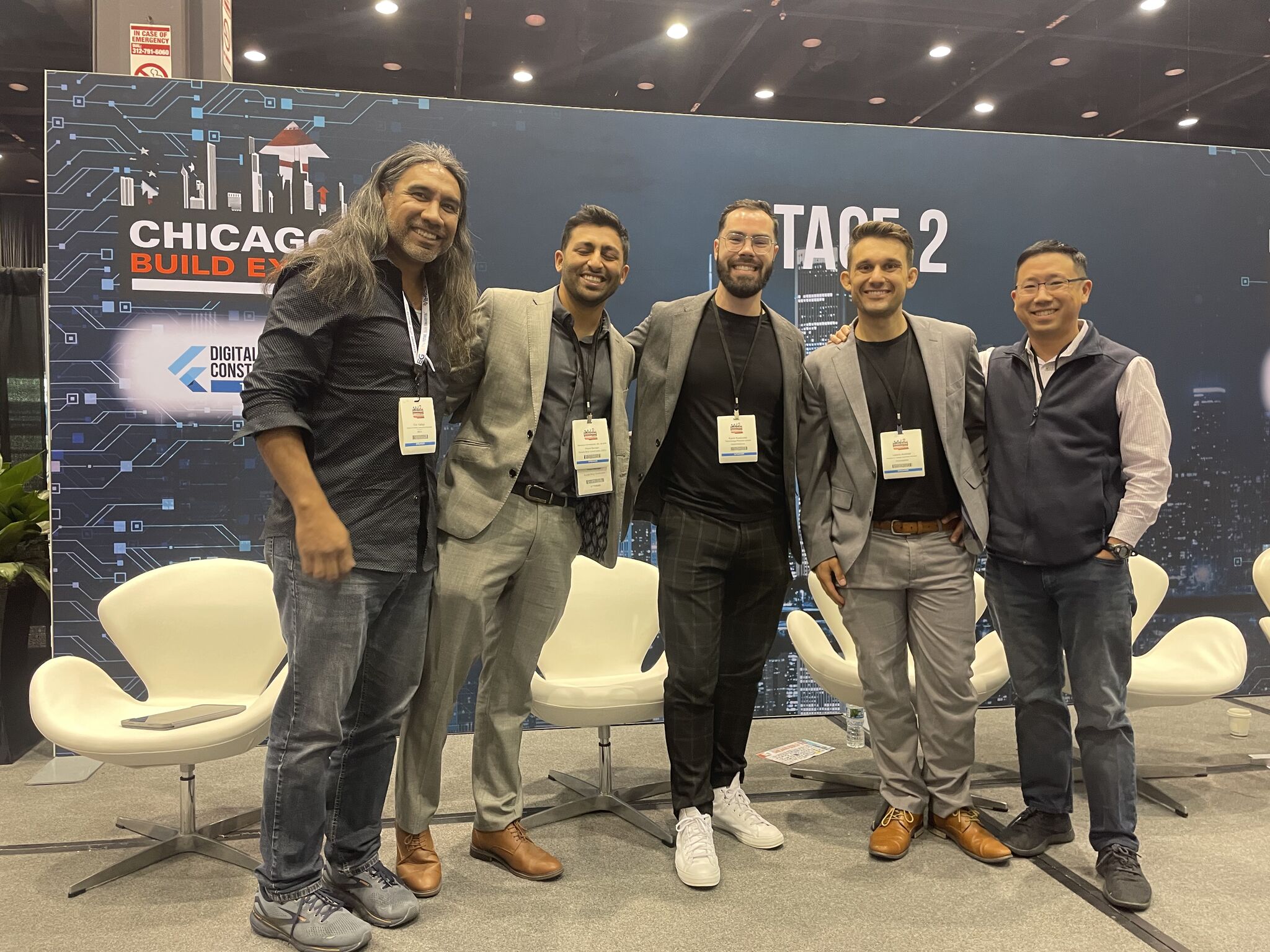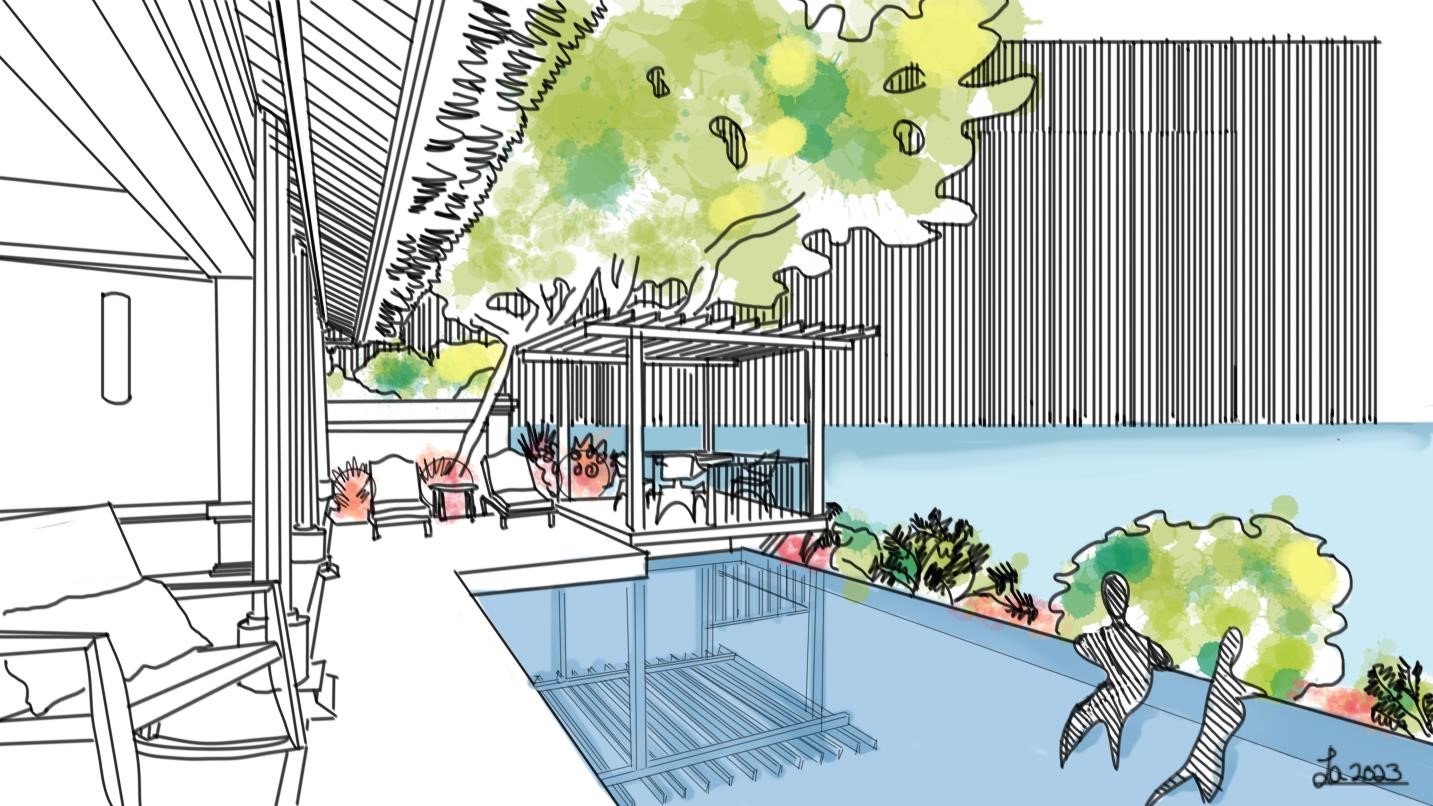Unlocking Efficiency with The Latest Digital Tools
Written on November 10th, 2024 by Laszlo Andrasi
I had the honor of speaking on the Chicago Build panel again this year on the topic of Unlocking Efficiency with The Latest Digital Tools. I spoke alongside industry experts to discuss how we can harness the latest digital tools to unlock efficiency, collaboration, and smarter outcomes. It was a compelling discussion where each of us brought unique perspectives on the challenges and opportunities facing design, construction, and engineering.
Embracing the Digital Shift and Gaining Buy-In
Eric Vallejo moderated the panel and opened with a point on a pivotal industry challenge: introducing and gaining buy-in for digital advancements. Technology is advancing rapidly, and organizations must evolve continuously. It’s not just about adopting new tools; it’s also about achieving buy-in from stakeholders. This often means showing how technology not only streamlines workflows but also aligns with the long-term strategic goals of clients and organizations. When we can clearly communicate the value, people are more open to embracing the change.
Balancing New Technologies with Workflow Efficiency
Saravana Vennelakanti highlighted that technology investments are as much about people and workflows as they are about the tools themselves. Each time we integrate a new tool or platform, there’s an inevitable impact on established workflows. The initial disruption can sometimes make it challenging to measure immediate benefits. However, with structured training and gradual integration, teams often find that the technology ultimately saves time, improves accuracy, and increases project cohesion. But there’s a balance—too much change too quickly can be counterproductive. A phased approach can prevent “tool fatigue” and ensure that technology adoption is sustainable and efficient.
Automation in Design and Documentation Tasks
Kevin Kosciulek spoke on leveraging automation for efficiency in documentation. Automation has become indispensable for many architectural firms, especially for repetitive, time-intensive tasks in documentation and design drawings. By adopting automation tools, teams can focus on high-level creative and strategic tasks. For example, automated design checks and drafting tools allow architects to ensure quality and consistency without manually reviewing each element. This not only streamlines project timelines but also elevates overall design quality, leaving less room for human error.
Trends in Interoperability Between Design, Construction, and Manufacturing
In the Perkins&Will segment, I emphasized the importance of interoperability between design, construction, and manufacturing, an area where Perkins&Will has been focused on advancing our capabilities. We’re seeing a rise in tools that allow for seamless data exchange between platforms, breaking down silos across stages of the project lifecycle. The latest developments in open standards and software compatibility make it easier to share information across platforms, from design to manufacturing and construction. This fluidity is critical for reducing rework and delays, allowing each phase to build more effectively on the previous one.
The Impact of Cloud-Based Deliverables on Client Outcomes
Another key trend we discussed is the use of cloud-based dashboards and deliverables to leverage design data, a topic that resonated with many on the panel. At Perkins & Will, we’re using cloud-based platforms to provide clients with real-time insights into project progress. This transparency enhances client engagement, allowing them to make more informed decisions based on the latest data. Additionally, these dashboards serve as centralized hubs for all stakeholders, fostering collaboration by keeping everyone on the same page. The result? Improved client satisfaction and more efficient workflows that adapt in real-time to project needs.
Cloud Native Approaches and Computational Design
Kermin Chok expanded on cloud-native approaches to computational structural design, emphasizing how these can enhance project outcomes by improving data management, collaboration, and scalability. By working within a cloud-based ecosystem, teams can access and compute data remotely, speeding up processes and enabling stakeholders to work from anywhere. The scalability of these cloud solutions means that teams can adjust resources based on project demands, improving efficiency and reducing resource strain.
Elevating Knowledge and Adding Value through Data Utilization
Kevin also spoke about leveraging project data to build corporate knowledge and add client value. As architects and designers, we generate vast amounts of project data, yet much of it goes untapped after project completion. By harnessing this data for internal training and trend analysis, firms can improve their staff’s skillsets and provide data-informed insights to clients. This creates a feedback loop where each project becomes a source of knowledge for the next, making organizations smarter and more efficient over time.
Gauging the ROI of New Technologies
Saravana closed with an essential point on gauging the ROI of new technologies. While the upfront costs and training associated with new tools can be substantial, measuring long-term ROI requires a comprehensive approach. It’s crucial to track key metrics such as time savings, error reduction, and client satisfaction to gauge the impact of these investments. By systematically tracking these metrics, firms can make better-informed decisions about future investments and demonstrate the value of their tech-savvy approaches.
Embracing Innovation for Sustainable Growth
Eric wrapped up our discussion by urging us to embrace innovation as an ongoing journey rather than a destination. It’s not just about adopting the latest technologies, but about fostering a culture where curiosity and learning drive continuous improvement. Innovation requires adaptability and the willingness to take calculated risks. As we continue to leverage digital tools, we have to remain focused on sustainable growth that benefits our teams, clients, and industry as a whole.
Reflecting on the panel, it’s clear that digital tools have immense potential to transform our industry, but only when they’re integrated thoughtfully. Unlocking efficiency isn’t about adopting every new tool—it’s about selecting the ones that align with our strategic goals and values. As we continue to push forward, I look forward to seeing how these discussions shape the future of architecture and construction.


